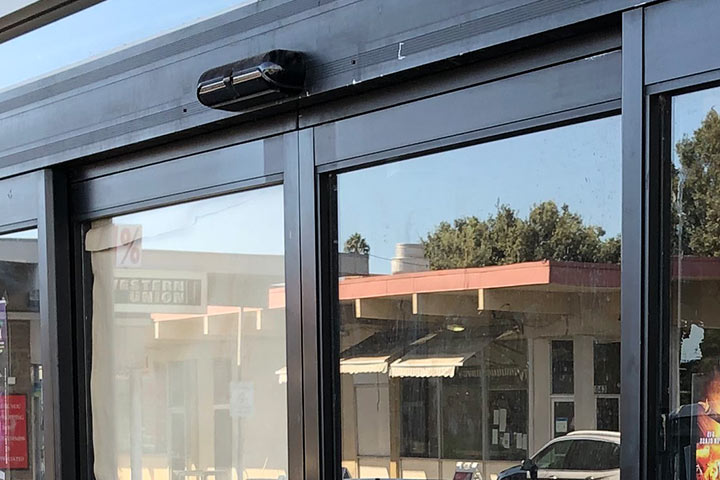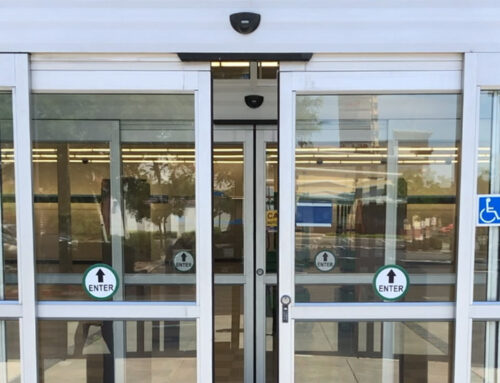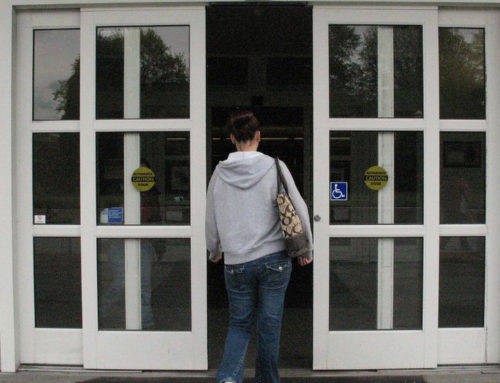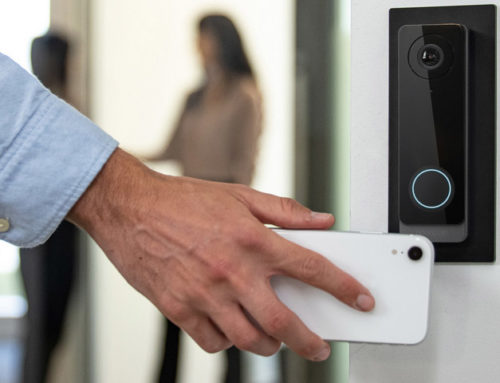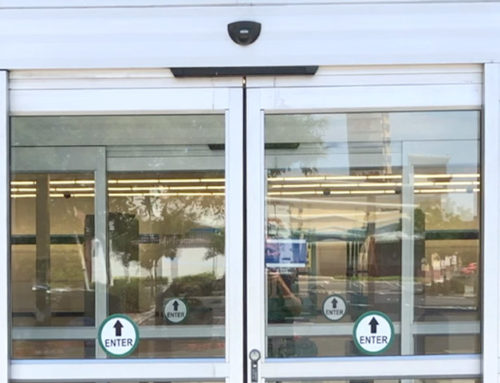Are you thinking about how people enter your commercial property? Different commercial doors create a different experience for your customers, staff and guests. Choosing one that works with your space can make visiting your property more convenient and simpler. Some doors also offer special features, like low energy usage and low air exchange that can keep more heat in your building. Discover the six types of automatic commercial doors and the advantages each can bring your business.
1. Automatic Swinging Doors
These doors are just like typical manual doors that swing open, except that they open automatically. Customers, staff and guests will appreciate that they don’t need to touch these doors, so they won’t pick up any germs and bring it through your property. Plus, then the property itself will be cleaner.
On the other hand, automatic swinging doors are much more convenient to walk through in one direction. In the other, the door will swing towards the person as they approach. This can be frustrating for those with mobility issues, those who walk slowly, or parents with small children. They can be a great option for internal doors that are typically approached from one direction or for back-of-house external doors (in the rare case that an automatic door is needed for your back of house.) However, they are not always the best choice for your main exterior doors because they can cause backtracking, creating problems for crowds.
2. Automatic Sliding Doors
Sliding doors do not swing in either direction; instead, the door pulls to one side. There are several different options for automatic doors. You can have a single automatic door that slides open to allow for the open space of a typical single swinging door. Or, you can get automatic sliding doors that have four panels. The two middle panels pull to the side, giving users an empty space the size of a double door for users to walk through.
However, sliding doors need space to slide into, so you won’t get the full advantage of a large entrance.
Half or so of the space is still blocked by the door when these doors are open. That space can be more than enough if you have a large entrance and don’t have to bring anything very large through the door. However, some businesses will need even larger entrances. For example, hospitals with relatively small entrances for the ambulance bay may need more space for the paramedics and stretcher to come through. So they should consider doors that get even more out of the way.
3. Automatic Telescoping Doors
Automatic telescoping doors are like sliding doors, except they are made of several more even smaller panels, rather than just four. These smaller panels slide out of the way from the center, just as a sliding door. They stack on top of one another and, because they are smaller, they block less space in the doorway. This door type can help you get more room in your doorway. These telescoping doors are still equally approachable from each direction, so they are a great option for entrances.
However, there are few situations where this extra space is really required, and telescoping doors require a little bit more room horizontally in the space to stack all of those panels. So, you won’t often see telescoping doors in use. That said, when called for, this niche solution can make small entrances significantly more functional.
4. Automatic Folding Doors
Folding doors have a joint in between each panel. They fold together, kind of like an accordion. They can open wider than sliding and telescopic doors. They also take up less space widthwise, as the door panels can lay relatively flat against the walls on the side of the door. Therefore, they are a great option for external doors where space is at a premium in more than one direction.
Or the other hand, folding doors are somewhat directional. They don’t flare out as much as automatic swinging doors, but they do poke out a bit. This small projection means that these doors are much better to approach from one direction than another. If your customers, staff or guests approach in the direction that the door folds, they may have to slow down or back-up slightly. Plus, as folding doors are uncommon, people may be surprised by these doors, which isn’t a good thing. You want doors to act predictably so that people are not inconvenienced. Folding doors are best for doors where traffic usually approaches the door from one direction.
5. Automatic Revolving Doors
Revolving doors offer many of the strengths of the other automatic commercial door types. These are large vestibules that automatically and slowly revolve. They can have continuous openings or small gaps where the door is closed. Revolving doors will allow less of your conditioned air outside, which can help reduce your heating and cooling costs.
Revolving doors also have a huge advantage in that they allow for bi-directional traffic. People can leave at the same time that other people are entering the building. However, this makes them a poor choice to combine with an access control system.
The door is just as easy to approach from either direction, and people intuitively understand revolving doors, so they don’t cause inconvenience or backtracking. Automatic revolving doors must move slowly in order to accommodate the speed of the elderly or those with mobility issues, so they are no good for emergency exits.
6. Low Energy Options
Any of these doors can be made relatively energy-efficient to reduce your operating costs. Large revolving doors will use the most energy. However, they can sometimes balance that out with reduced energy usage for heating and cooling. It all depends on your building. Your door technician can help you find a low energy option no matter which automatic commercial door type you’re interested in.
Which Commercial Door is Right for You?
Not sure which of the seven automatic commercial door types is right for you? The team at CLAD can help you assess which is best for your specific entrance, business, and company culture.
Learn more about the automatic doors we install or call now to get started.

